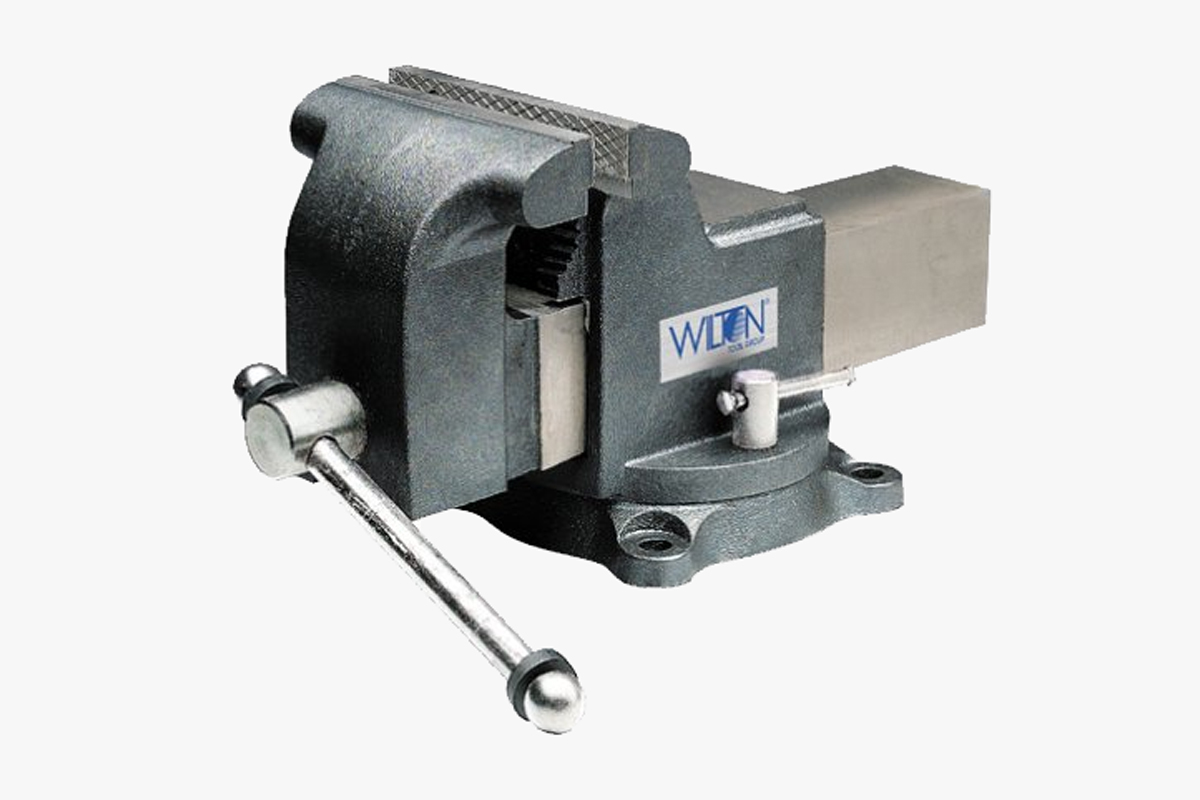For many woodworkers, metalworkers, and DIY-ers, a bench vise is a must-have in the toolbox. With it, a workpiece can be securely fixed in a place so that it can be safely worked on. It is useful during operations such as drilling, planing, and sawing. A bench vise can make your work easier and quicker.
On the surface, bench vises look pretty much the same. But a closer inspection reveals that there are several features that set apart the best bench vises from the rest. The best bench vises are stable, durable, reliable, versatile, and simple to operate.
Here are the 12 best bench vises, along with a more in-depth buying guide at the end.
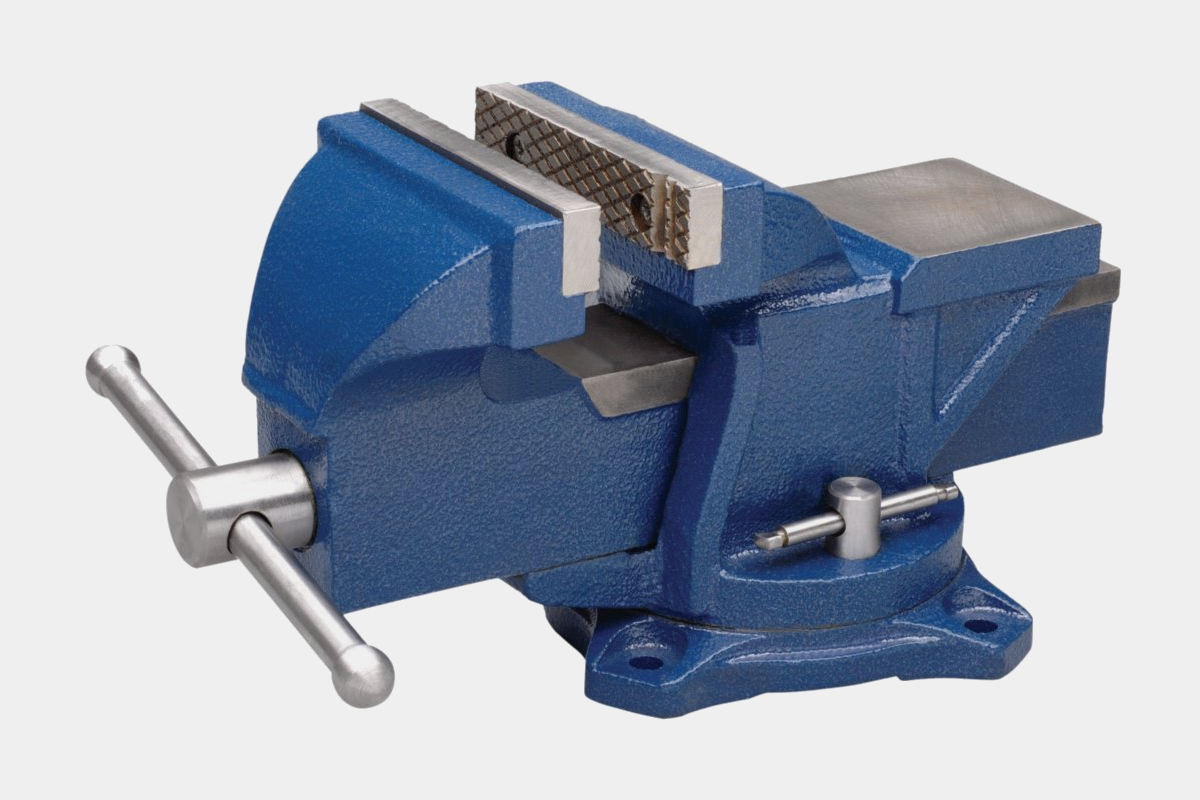 Wilton 11104 Wilton Bench Vise 4-Inch
Wilton 11104 Wilton Bench Vise 4-Inch
The Wilton 11104 is a strong and sturdy vise ideal for both beginners and expert craftsmen. It is made of high-strength steel and features a double lock down swivel base. It is reasonably heavy at 7 kilograms.
With a 4-inch opening, the vise is made for benchwork. It is able to clamp mid-sized objects, such as a piece of lumber. It features jaws with a diamond-machined finish for superior grip.
There are also three lug nuts located on the base, designed to secure the vise to the work table. These complement the square design of the center slide, ensuring stability and precision clamping. This design also protects the main screw from dirt and grime, which can lead to fast wear and tear.
Constructed from high-grade steel, this vise has the strength and durability to last for years. It has a clean, blue coating that prevents rusting and requires minimal maintenance.
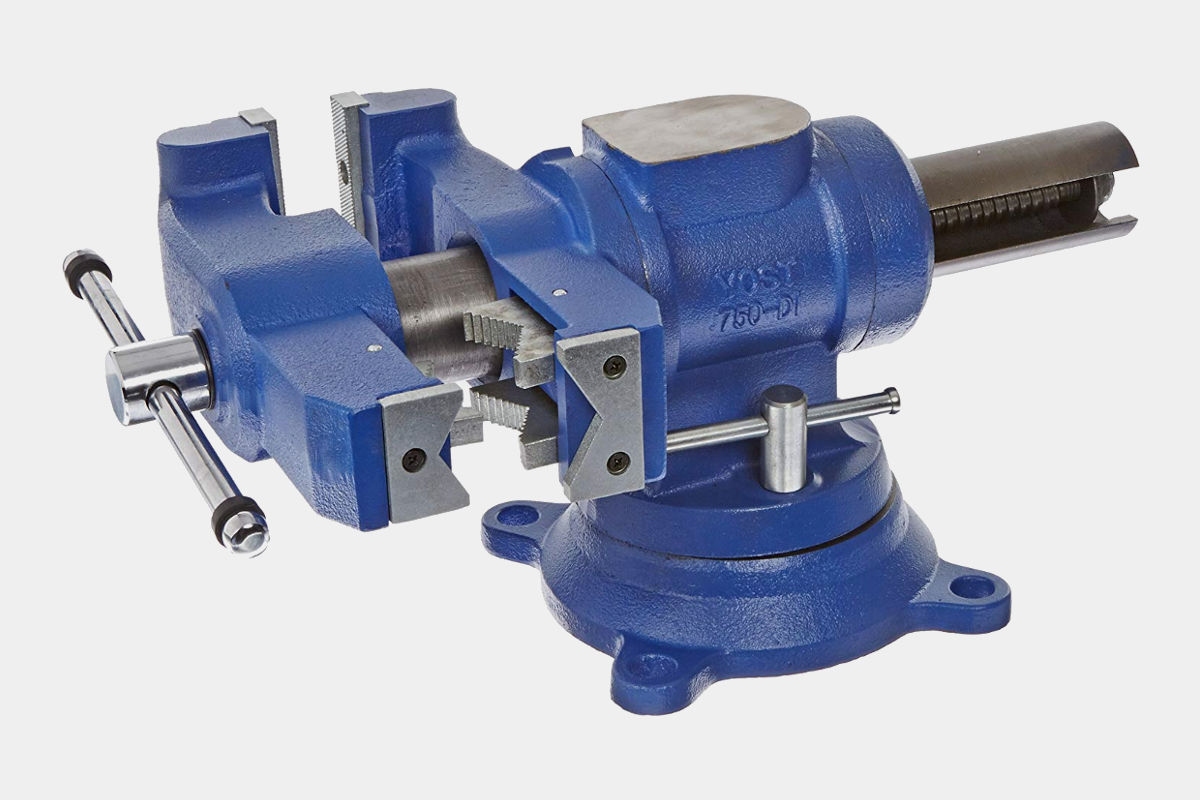 Yost Vises 750-DI 5-inch
Yost Vises 750-DI 5-inch
Constructed from industrial-strength iron, the Yost 750-DI 5-inch bench vise is designed for heavy-duty use. With ductile iron castings, the vise is able to clamp more than 9,000 PSI of force. Weighing around 63 pounds, it features 5-inch wide jaws.
Strong and robust, this bench vise is packed with features. There’s a pull pin locking mechanism that enables it to rotate to lock into place. This can be done by pulling out the pin and rotating the vise. The pin then pops into place in one of the 12 different locking positions.
It also has self-align pipe jaws that can adjust to the area being clamped and so provide max clamping pressure. Constructed from ductile iron, it is up to two times stronger than most bench vises on the market. This vise likewise has a reinforced anvil, plus four mounting tabs that are designed to attach the vise onto a workbench securely.
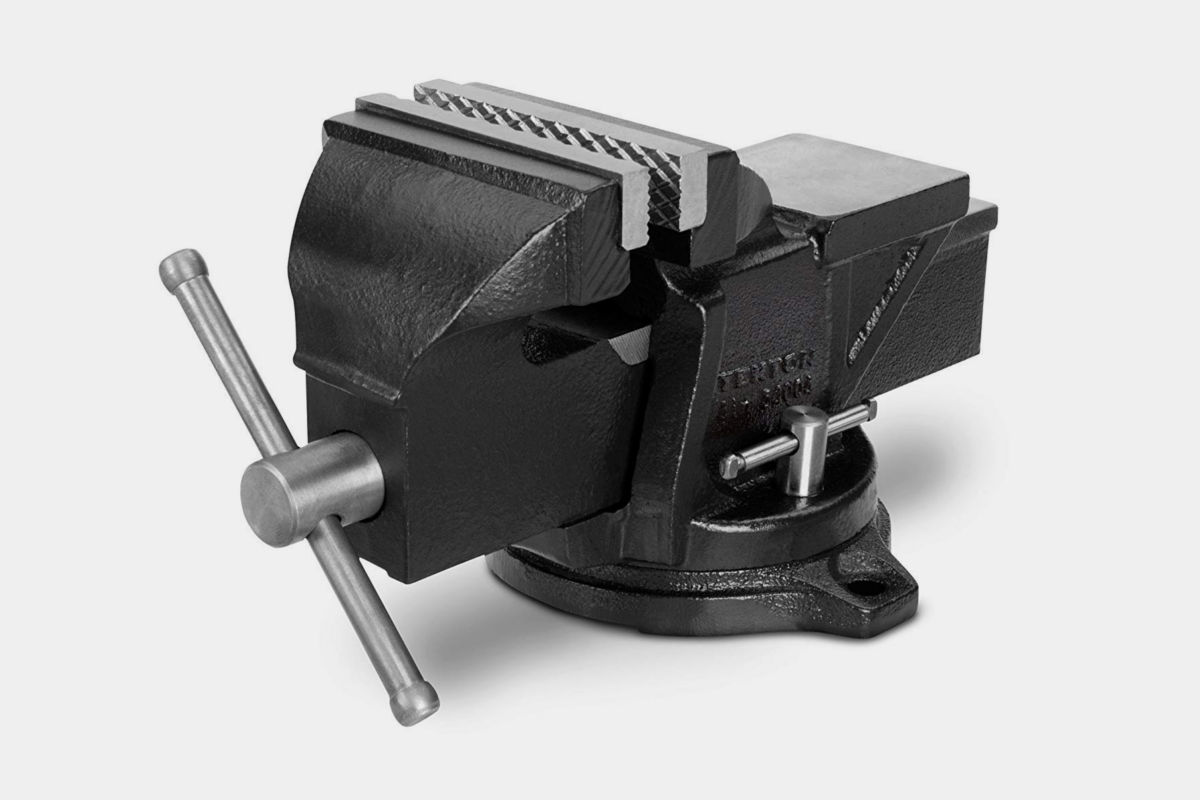 TEKTON 54004 4-Inch Swivel Bench Vise
TEKTON 54004 4-Inch Swivel Bench Vise
The Tekton 54004 swivel bench vise gives users a lot of value for money with its solid construction and good build quality. The unit has a jaw opening of 3 inches, while the throat depth is 2.25 inches.
It is made of cast iron with up to 30,000 PSI tensile strength. It weighs around 15 pounds. It is also quite versatile. This bench vise is highly recommended to people who often take on small DIY projects.
The unit features non-slip steel jaw pads that secure pieces of wood and metal. And the 120-degree swivel base lets users find just the right placement for their projects. It also enhances the grip and locking mechanism of the bench vise, ensuring superior holding for medium-duty projects.
This vise has a polished anvil that serves as a smooth and consistent work surface for projects like shaping and forming metal pieces.
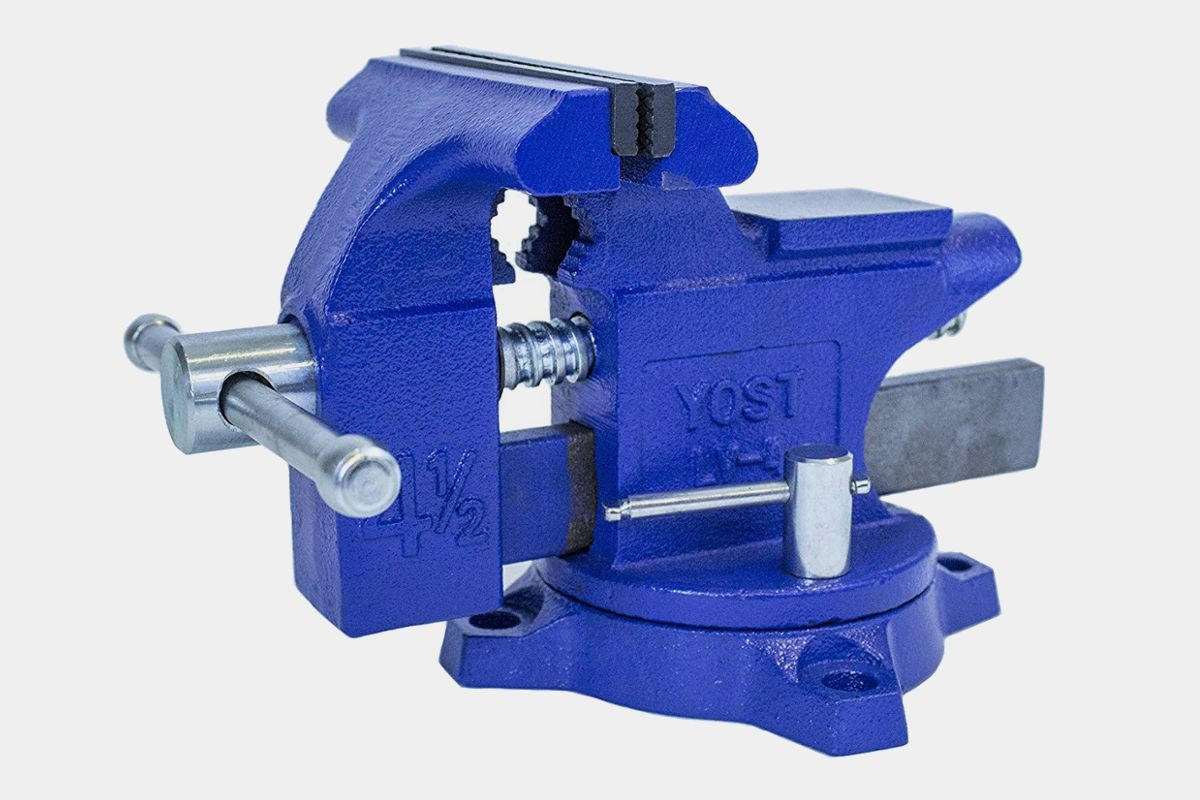 Yost LV-4 Home Vise
Yost LV-4 Home Vise
This 4.5-inch bench vise is an ideal addition to your home shop. It is made from cast iron and features steel vise jaws. It can rotate up to 240-degrees on the base, giving users plenty of flexibility in finding the right angle or placement of their workpieces.
This unit also has a base with four mounting holes, increasing its stability and preventing side-to-side movement of the vise in the process. While the bolts for the holes are sold separately, the manufacturer recommends the use of ⅜ inch bolts.
Its main screw is plated with zinc has a locking C collar for quick engagement and disengagement. The unit also has built-in pipe jaws that hold small pipes and tubes with diameters ranging from 0.6 inches to 1.85 inches. It is painted with blue powder coat for increased durability.
 IRWIN 226306ZR
IRWIN 226306ZR
The Irwin 226306ZR is designed for serious craftsmen, like professional woodworkers and metalworkers. It has 6-inch jaws with a 4.25-inch throat depth. It is solid and stable, weighing around 30 pounds.
It also features steel safety jaws designed to secure a workpiece for steady and consistent work. This model has anvil and pipe jaws that give a sturdy grip. Its clamping pressure is rated up to 3,000 pounds.
This vise is designed for smooth action with its long barrel and sturdy nut. It offers easy positioning, too. The vise can also be secured with moderate tightening.
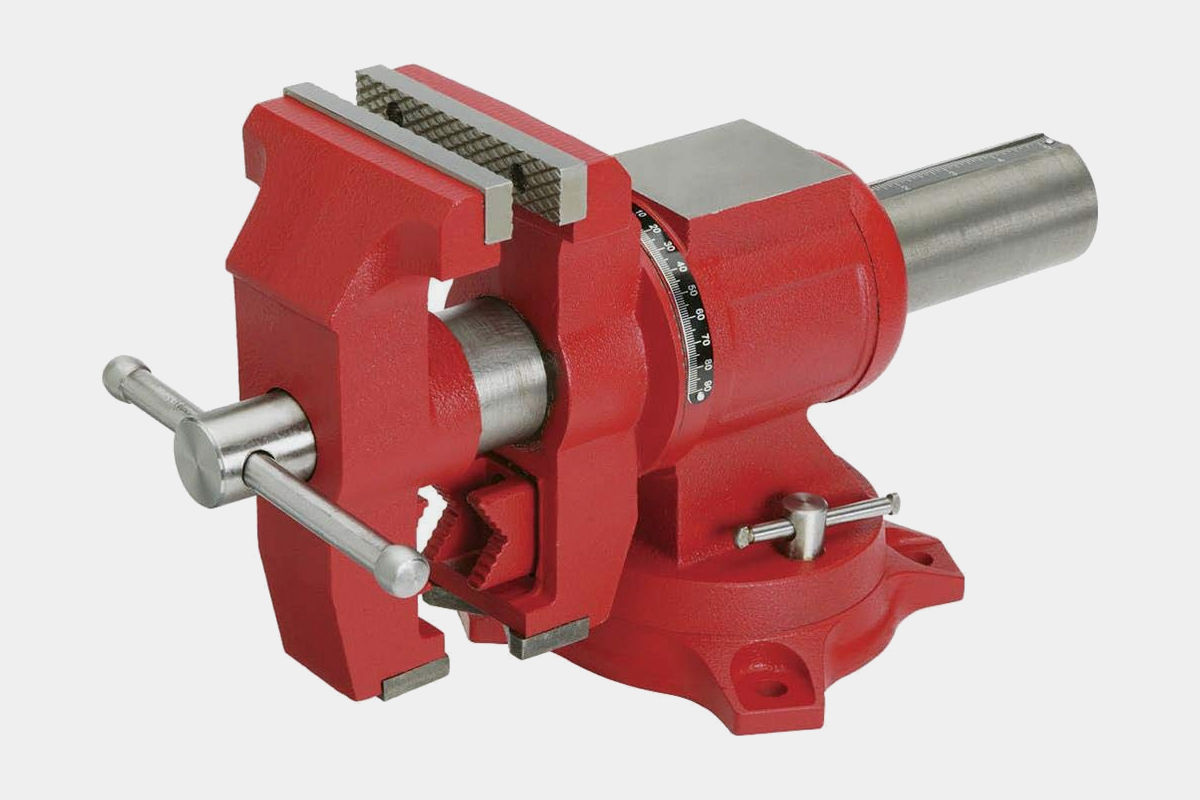 Grizzly G7062 5-Inch Bench Vise
Grizzly G7062 5-Inch Bench Vise
This multi-purpose bench vise provides excellent clamping power, unlimited work positions, and superior stability. It is also a durable and low-maintenance bench vise highly recommended to both DIY-ers and professional craftsmen.
Weighing 50 pounds, this bench vise features 360-degree rotating jaws. This enhances the flexibility of the bench vise as it can take on different workpieces at various positioning and angles. The unit has a degree indicator, too, allowing users to track how far they have turned the vise.
The 5-inch jaws can be tightened or loosened by levers that are easy to operate. The lead screws, meanwhile, are low-maintenance and require minimal lubrication. Four mounting holes are found on the base for superior stability. The swiveling base also allows the unit to take in workpieces at various angles. This unit also has a large anvil, which bodes well for serious metalworkers.
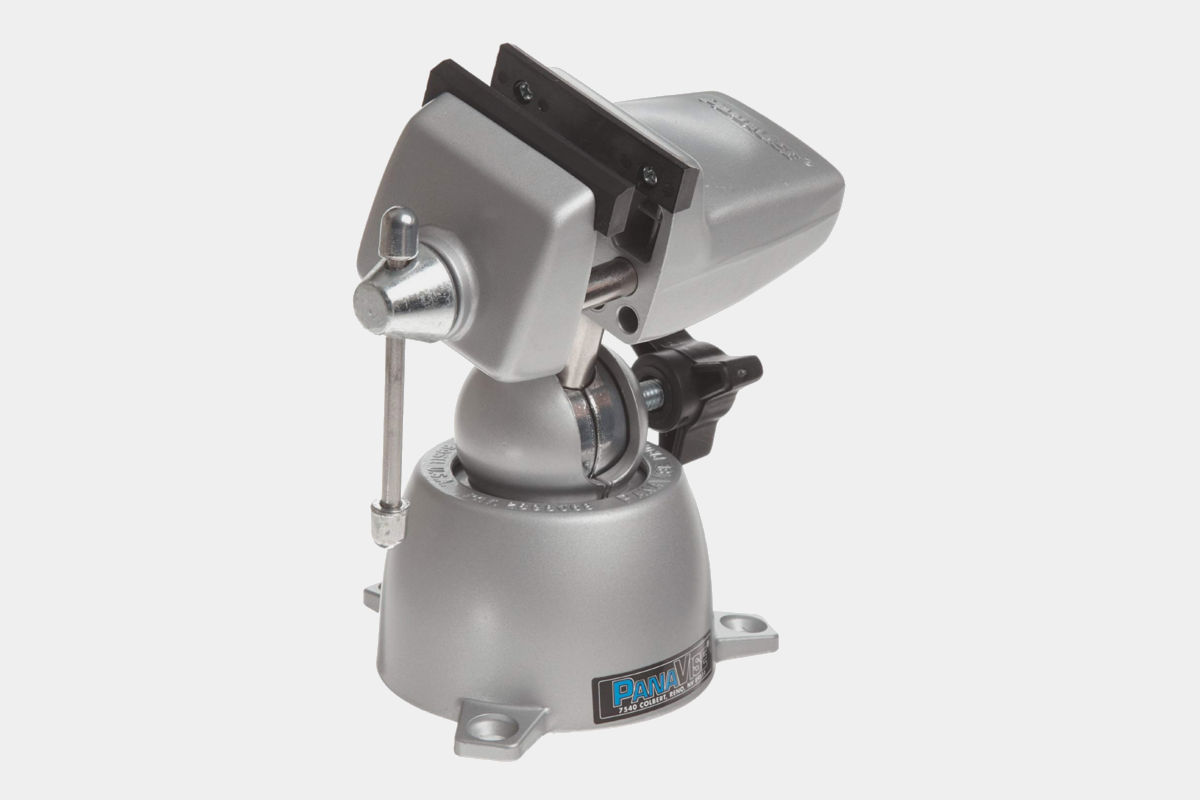 Panavise 301
Panavise 301
From afar, the Panavise 301 appears diminutive and less striking than the other bench vises on this list. Yes, it is not the biggest bench vise you can buy, but that’s okay because it is really for small projects, such as home repairs and working on electronics. It may be little, but it is strong and sturdy.
Make no mistake about it; the Panavise 301 is relatively small. It measures 6.3 x 5.3 x 3.5 inches and weighs 3 pounds. But its size does not tell you how reliable this tool is. It has jaws that are 2.5 inches wide, 0.6 inches tall, and open up to 2.25 inches. It also has easy-to-use single knobs that can control head movement through three planes. It is also heat-resistant up to 200 degrees Fahrenheit.
With its size and features, the Panavise 301 is ideal for projects requiring precision, including working with electronics and jewelry making. The jaw placement provides versatility required for small, precious works. And its heat-resistance makes it great for tasks such as light welding and soldering.
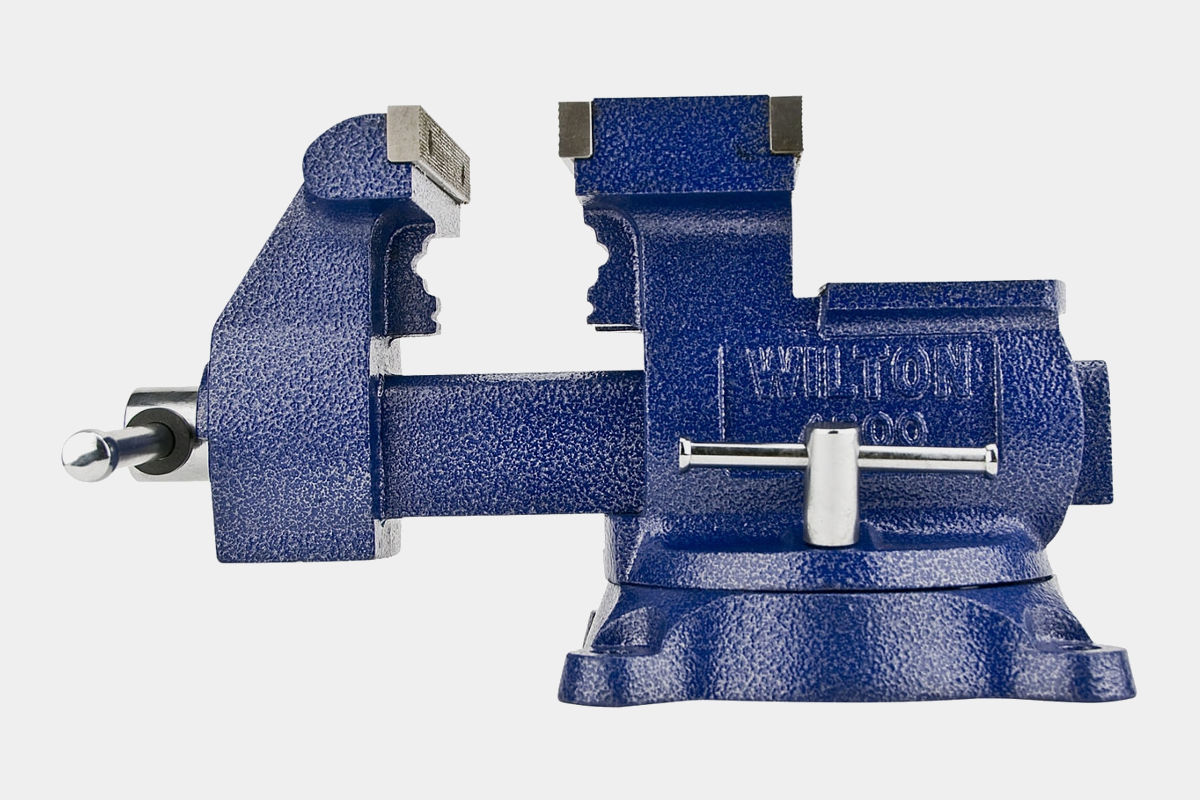 Wilton 14500
Wilton 14500
The Wilton 14500 is built like a bull. It features dual locks for enhanced stability, and its most impressive feature is its reversible jaws, allowing it to lock all types of projects. This bench vise can give you a tone of value for your money.
The reversible jaws, with nearly a 10-inch opening, enable the unit to tackle almost all kinds of projects. It also has a swiveling base that facilitates the flexible positioning of a workpiece, resulting in a more precise cut. The base swivels to a full 360 degrees.
This vise provides one of the widest openings on the market with an opening of around 9.75 inches when in reverse and around 6 inches when not reversed. Those numbers outclass the 5-6 inches that most bench vises have.
This unit also has a durable body and so i capable of withstanding up to 1,000 pounds of pressure. And twin-locking handles ensure that it won’t rotate or move while holding a workpiece.
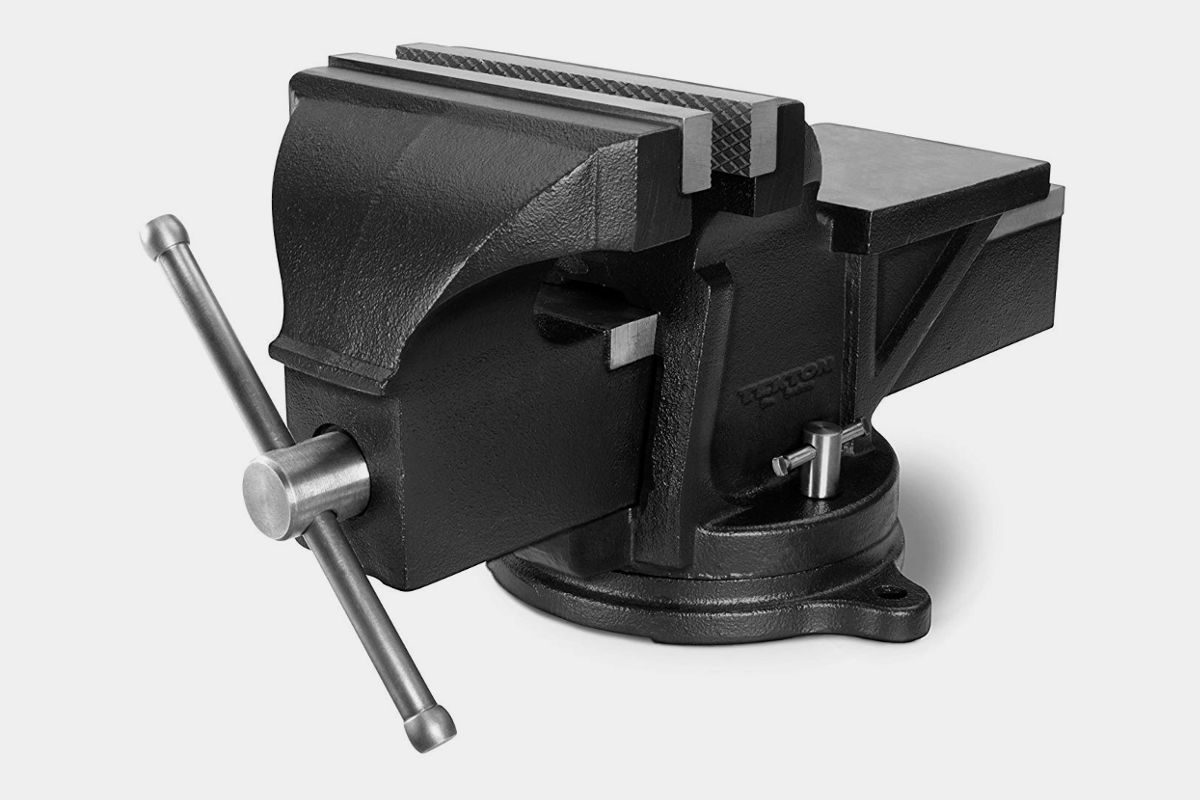 Tekton 54008 8-inch Swivel Bench Vise
Tekton 54008 8-inch Swivel Bench Vise
This bench vise is ideal for medium-duty tasks, such as carpentry, gunsmithing, and minor household repairs. It is durable as it is constructed from 30,000 PSI cast iron. It measures 20 inches long, 10 inches wide, and 9 inches tall. It is heavy and robust at around 80 pounds.
With 8-inch jaws, this bench vise has one of the biggest openings available. The jaws are made of non-slip serrated steel and so can provide a secure grip on any project. Adjusting the workpiece should not be much of a hassle with the 120-degree swivel base of the bench vise, enabling users to position their projects just in the right spot. Dual lock-down nuts, meanwhile, keep the project in place.
There are also three mounting points on the base– two on each side and one in the rear. It has a steel anvil that can be used as a smooth surface for working on metal pieces.
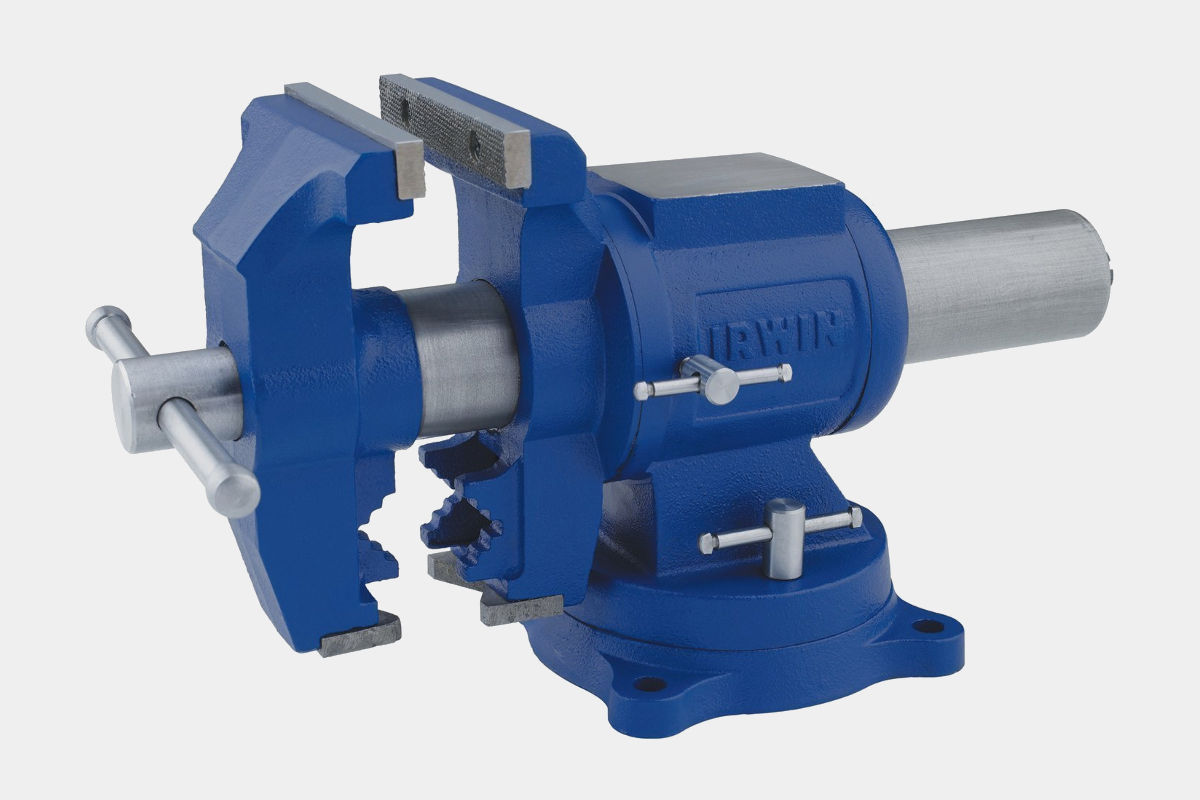 IRWIN 5-inch Multi-Purpose Bench Vise
IRWIN 5-inch Multi-Purpose Bench Vise
This solid and versatile bench vise features rotating pipe jaws, a fused steel handle designed for hassle-free adjustment, and an anvil. It doesn’t have the widest jaw, but it is still good enough for most DIY and home repair jobs.
At around 33 pounds, the IRWIN 4935505 is not the heaviest on this list. It is made from high-grade cast steel with a rating of 65,000 PSI. It also has an incorporated anvil that can keep it stable while providing a work surface for shaping metals. The 360-degree swivel base, meanwhile, allows users to find the perfect position and angle for their workpiece.
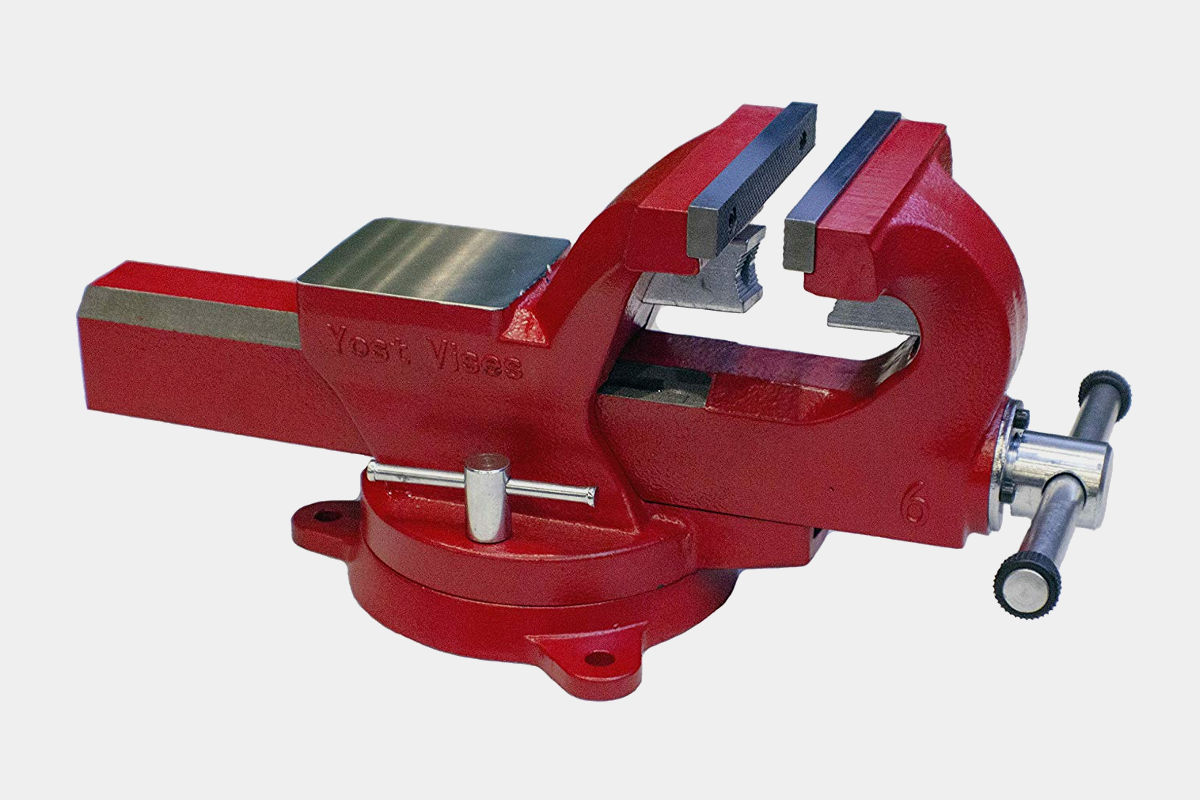 YOST Vises 5-Inch Forged Steel Bench Vise
YOST Vises 5-Inch Forged Steel Bench Vise
This multi-purpose bench vise is another good pick for DIY-ers and serious craftsmen looking for a holding tool that can give them quite a bit of value for their money. It is made from forged steel with a powder-coated finish. The base swivels to a full 360 degrees, allowing users to find the right placement or position for their workpiece.
The 5-inch jaws should be able to take in most workpieces. They are also made of hardened steel and grooved for superior grip. And because the jaws are replaceable, you won’t need to buy a whole new vise they get worn-out.
There is also an anvil work surface, which has been machined smooth to be ideal for shaping or bending metals. It is also constructed from forged steel and is, therefore, more durable compared to work surfaces of cast iron vises. Three mounting holes on the base secure the bench vise.
Wilton 63302 6-Inch Shop Vise
Rounding out our list is this 6-inch vise from Wilton. Ideal for both home repairs and industrial use, it is made from iron with a rating of 30,000 PSI. It features a 360-degree swivel base and two lockdowns for setting the work position.The 6-inch jaws are serrated for superior grip on any workpiece. The top jaws are replaceable, and the pipe jaws can help in facilitating the cutting and bending of materials. There is also an integrated anvil for bending metals. The swivel locks, meanwhile, give users the ability to tighten both sides of the unit.
Parts of a Bench Vise
Prior to buying a bench vise, it is important to familiarize yourself with the main parts of this tool that are integral in woodworking and metalworking applications. Below are the main parts of a bench vise:
- Dynamic jaw
- Static jaw
- Slide
- Handle
The dynamic jaw is the jaw nearest to the operator. Also called the sliding jaw, it has a handle protruding through it. This applies and relieves clamping pressure. On the other hand, the static jaw is normally the heavier of the jaws. And as the name suggests, it is designed to be stationary during operation. It is typically fastened to the bench.
Located at the front of the vise, the handle serves as the lever turning the lead screw and, in turn, moving the dynamic jaw. It is engineered to complement the clamping power that the vise can take on.
Uses of a Bench Vise
The bench vise is one of the most versatile tools you can ever have. For many people, the most obvious use of this tool is to hold a piece of lumber or metal while you’re cutting or modifying it. But there are other ways to use a bench vise aside from when using a saw.
For example, a bench vise is helpful during woodworking. It can be used in using glue. Instead of relying on gravity or using your hands to hold two pieces together, you can put your project in a vise and leave it to dry. Doing so is especially useful if you are working on something requiring precise and even pressure.
Bench vises also come in handy when working with a drill. The vise can let you drill holes more accurately and safely. You can also rely on a bench vise when using sandpaper. By securing your project without using your hands and, instead, utilizing a bench vise, you can be assured that your work will not be accidentally damaged.
This type of holding tool can also be used to securely hold an electrical conduit prior to cutting. And lastly, it can be utilized just like a workbench. This can come in handy when you don’t have enough space in your workstation.
How to Choose a Bench Vise
There are several things to keep in mind when shopping for a bench vise. Arguably, the most important is the purpose of the tool. Before choosing a bench vise, determine how you will most use the tool. Is it for woodworking? Is it for making crafts? Is it for heavy-duty work like metalworking? If you are going to use it for metalworking, then you should get a metalworking vise, which is strong and used for blacksmith’s work.
Build: The build quality of the bench vise is equally important. Those made from cast iron are considered of good build quality and likely to last for a longer time. Avoid buying one made from aluminum alloy.
Size: This is another factor to consider. You need a larger bench vise if you are going to do metalworking. A smaller one should suffice for working with watches, for example. The downside, however, is that smaller bench vises tend to have fewer capabilities.
Of course, you have to be concerned with the specifications of the bench vise. The size of the vise, which pertains to the length of its jaws from end to end, indicates the maximum amount of contact of the unit with a workpiece. Generally speaking, a 4 to 5-inch bench vise is enough for DIY projects and general household tasks. But it is recommended that you consider the biggest workpiece you could work on as you’d rather have a bench vise with a wider jaw than you need than one that’s too small for your project.
Depth: The throat depth is critical, too. This is measured from the top of the jaws up to the top of the slide. The longer the throat is, the more capable the bench vise is of holding larger pieces.
Mounting: You should also be concerned about the mounting interface. Bench vises typically have bolt-on and clamp type mounting interfaces. The bolt-on features 4 bolts for securing the bench vise to the work surface. It is ideal if you are going to use significant clamping pressure. The clamp type, on the other hand, is ideal for light applications. Compared to the bolt-on design, the clamp type is easier to install but does not offer the same kind of security or stability.
You will also encounter the term PSI, or pounds per square inch. This refers to the bench vise’s strength in clamping down on a workpiece. Simply put, the higher the PSI rating of the bench vise, the better it is at holding a project.
Anvils: Finally, bench vises with anvils are good choices too because the anvil can serve as a work surface for bending or shaping metal.




